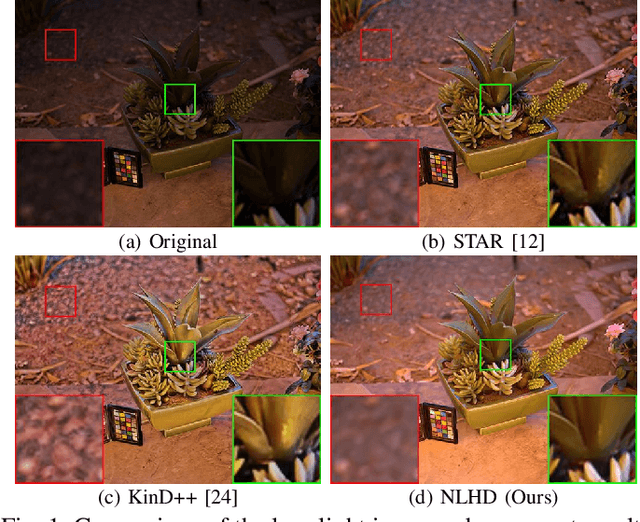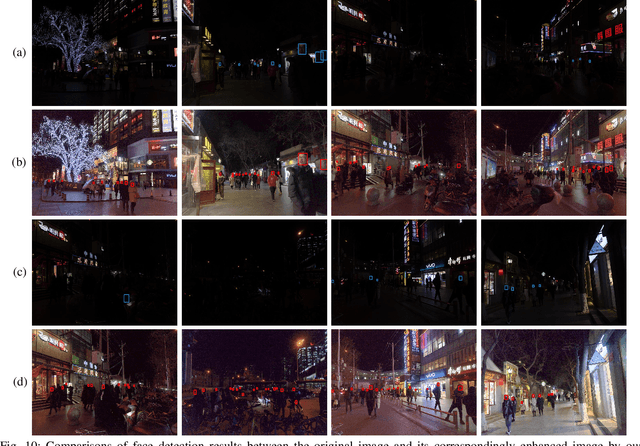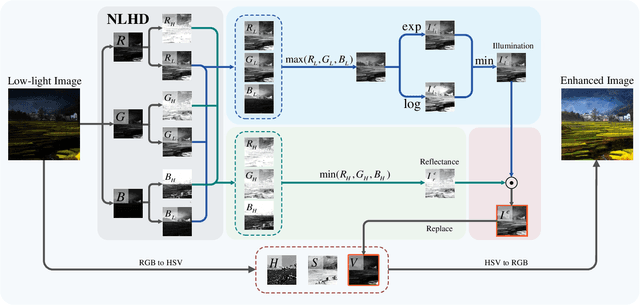NLHD: A Pixel-Level Non-Local Retinex Model for Low-Light Image Enhancement
Paper and Code
Jun 15, 2021



Retinex model has been applied to low-light image enhancement in many existing methods. More appropriate decomposition of a low-light image can help achieve better image enhancement. In this paper, we propose a new pixel-level non-local Haar transform based illumination and reflectance decomposition method (NLHD). The unique low-frequency coefficient of Haar transform on each similar pixel group is used to reconstruct the illumination component, and the rest of all high-frequency coefficients are employed to reconstruct the reflectance component. The complete similarity of pixels in a matched similar pixel group and the simple separable Haar transform help to obtain more appropriate image decomposition; thus, the image is hardly sharpened in the image brightness enhancement procedure. The exponential transform and logarithmic transform are respectively implemented on the illumination component. Then a minimum fusion strategy on the results of these two transforms is utilized to achieve more natural illumination component enhancement. It can alleviate the mosaic artifacts produced in the darker regions by the exponential transform with a gamma value less than 1 and reduce information loss caused by excessive enhancement of the brighter regions due to the logarithmic transform. Finally, the Retinex model is applied to the enhanced illumination and reflectance to achieve image enhancement. We also develop a local noise level estimation based noise suppression method and a non-local saturation reduction based color deviation correction method. These two methods can respectively attenuate noise or color deviation usually presented in the enhanced results of the extremely dark low-light images. Experiments on benchmark datasets show that the proposed method can achieve better low-light image enhancement results on subjective and objective evaluations than most existing methods.
 Add to Chrome
Add to Chrome Add to Firefox
Add to Firefox Add to Edge
Add to Edge